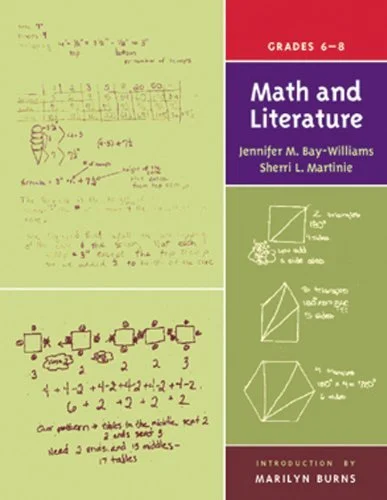My Other Math Sites
Lessons From the Classroom
One Rod Tall
I’ve written before about reading books to my kids and following up with an activity. I read the poem One Inch Tall to my 6th graders as we’re studying ratios and proportions.
One Inch Tall
If you were only one inch tall, you’d ride a worm to school.
The teardrop of a crying ant would be your swimming pool.
A crumb of cake would be a feast
And last you seven days at least,
A flea would be a frightening beast
If you were one inch tall.
If you were only one inch tall, you’d walk beneath the door,
And it would take about a month to get down to the store.
A bit of fluff would be your bed,
You’d swing upon a spider’s thread,
And wear a thimble on your head
If you were one inch tall.
You’d surf across the kitchen sink upon a stick of gum.
You couldn’t hug your mama, you’d just have to hug her thumb.
You’d run from people’s feet in fright,
To move a pen would take all night,
(This poem took fourteen years to write—
‘Cause I’m just one inch tall).
Then I asked them to write their own poem in similar fashion (structure and style) using a unit length of their choice other than “inch.”
We agreed on the following guidelines:
minimum 18 lines, however many stanzas, no more than one page
rhyming is fun and recommended, but not necessary
typed up, size 12 font, no funky-impossible-to-read-annoying font
must be illustrated by hand, stick figures are okay as teacher can’t draw either
poem title and heading on paper
objects in the poem must be reasonably proportional
[Original post had more student samples, I’m just sharing one here.]
One Foot Tall
by Caden
If you were one foot tall, you would only be two pencils long
You would be barely taller than a math book
You could ride a big shade hat down a brook
You could sleep in a school backpack
You wouldn’t be able to reach the door handle
If you were one foot tall
If you were one foot tall, a roof would be a cliff
An iMac would be a flat screen TV
A sturdy folder would be a surfboard when riding in ferocious winds
A bathtub would be a hot tub to rest in
A Dalmatian dog would be a horse you could ride away on
If you were one foot tall
If you were one foot tall, a dog’s bed would be a perfect size
A desk chair would be a lounge chair to sit and rest in
The shrubs in the backyard would be a small jungle
A grape would be a plum
A kitchen sink would be a nice bathtub
If you were one foot tall
Speaking of reading and books and math, hot off the press is Nico Rowinsky‘s new ebook, Sally Strange. Nico clearly has a good pulse on middle school kids — he writes with heart and lightness and allows the mathematics to weave ever so gently through the pages. His Sally Strange is an all-too-familiar 7th grader in our classroom. Get it for yourself, for a friend, for a young friend, for your school library (when the hard copy comes out).
Math and Literature
I read If You Hopped Like a Frog by David M. Schwartz to my 6th graders. They are learning about ratios and rates and how to solve proportions. It’s a beautiful book, and it’s beautifully illustrated by James Warhola.
At the back of the book, the author includes questions you can ask students to work on. I made this worksheet based on that.
If you were as strong as an ANT... you could lift a car!
Even junior high kids still like to be read to. They squeal with delight when I pull out a book—and it does not have to be an illustrated book.
Another book I read to my 6th graders earlier this year was How Much Is a Million? It's also written by Mr. Schwartz and illustrated by Steven Kellogg. We were working with number sense then, and the kids gave actual oohs and aahs as I read to them:
“How big is a billion? If a billion kids made a human tower... they would stand up past the moon... If you wanted to count from one to one trillion... it would take you almost 200,000 years.”
A great resource that I faithfully use is Math and Literature, Grades 6–8 by Jennifer M. Bay-Williams and Sherri L. Martinie.
One suggested reading is A Drop of Water: A Book of Science and Wonder by Walter Wick. I read this to my students, and afterward, they blew bubbles on their desks and measured the diameter of each burst bubble to find the circumference.
We had a lot of fun!






